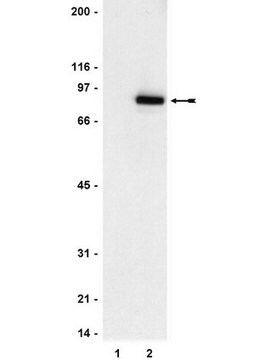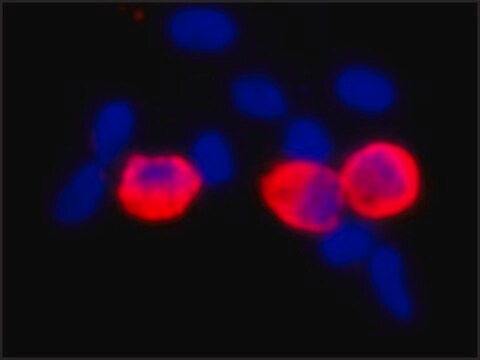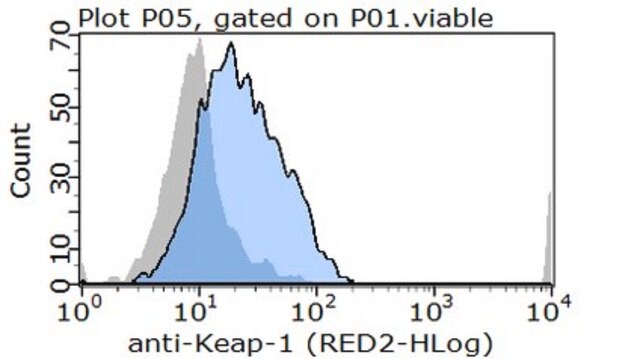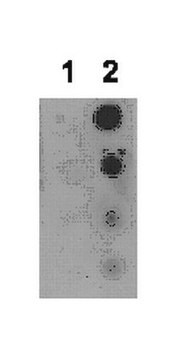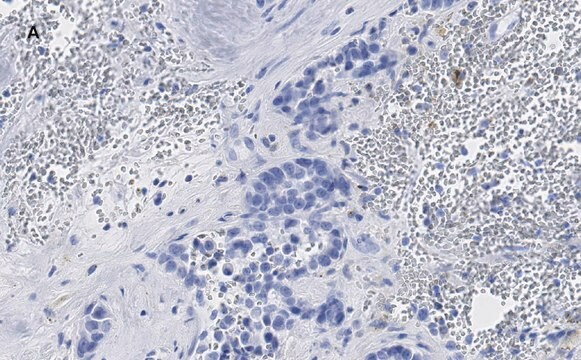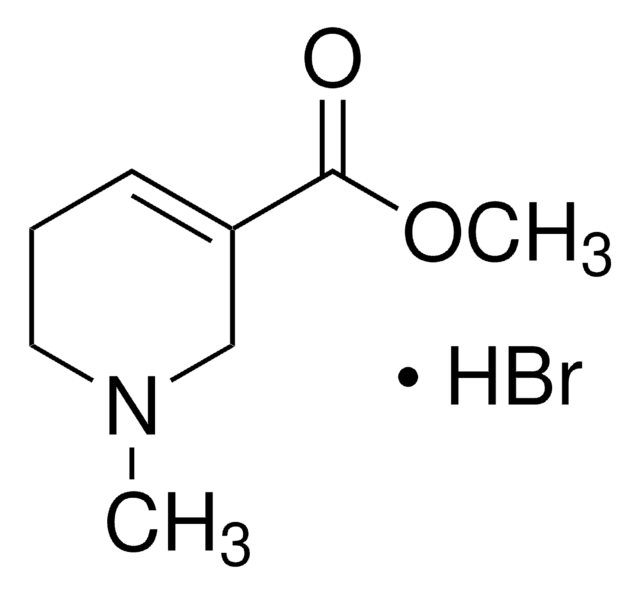05-495
Anti-phospho-STAT5A/B (Tyr694/699) Antibody, clone 8-5-2
clone 8-5-2, Upstate®, from mouse
Synonim(y):
signal transducer and activator of transcription 5A
About This Item
Polecane produkty
pochodzenie biologiczne
mouse
Poziom jakości
forma przeciwciała
purified antibody
rodzaj przeciwciała
primary antibodies
klon
8-5-2, monoclonal
reaktywność gatunkowa
mouse, sheep, human, rat, bovine
producent / nazwa handlowa
Upstate®
metody
western blot: suitable
izotyp
IgG
numer dostępu NCBI
numer dostępu UniProt
Warunki transportu
wet ice
docelowa modyfikacja potranslacyjna
phosphorylation (pTyr694/pTyr699)
informacje o genach
human ... STAT5A(6776)
Opis ogólny
Specyficzność
Immunogen
Zastosowanie
Jakość
Western Blot Analysis: 0.5-2 μg/mL of this lot detected phosphorylated STAT5A/B in lysates from 3T3/NIH cells stimulated with PDGF. 0.5-2 μg/mL of a previous lot detected phosphorylated STAT5A/B in lysates from 3T3/A31 cells stimulated with PDGF and from HeLa cells stimulated with interferon-a (IFN-a).
Opis wartości docelowych
Postać fizyczna
Komentarz do analizy
IFN-α induced HeLa cells or GM-CSF treated TF-1 cells
Inne uwagi
Informacje prawne
Nie możesz znaleźć właściwego produktu?
Wypróbuj nasz Narzędzie selektora produktów.
Kod klasy składowania
12 - Non Combustible Liquids
Klasa zagrożenia wodnego (WGK)
WGK 1
Temperatura zapłonu (°F)
Not applicable
Temperatura zapłonu (°C)
Not applicable
Certyfikaty analizy (CoA)
Poszukaj Certyfikaty analizy (CoA), wpisując numer partii/serii produktów. Numery serii i partii można znaleźć na etykiecie produktu po słowach „seria” lub „partia”.
Masz już ten produkt?
Dokumenty związane z niedawno zakupionymi produktami zostały zamieszczone w Bibliotece dokumentów.
Nasz zespół naukowców ma doświadczenie we wszystkich obszarach badań, w tym w naukach przyrodniczych, materiałoznawstwie, syntezie chemicznej, chromatografii, analityce i wielu innych dziedzinach.
Skontaktuj się z zespołem ds. pomocy technicznej